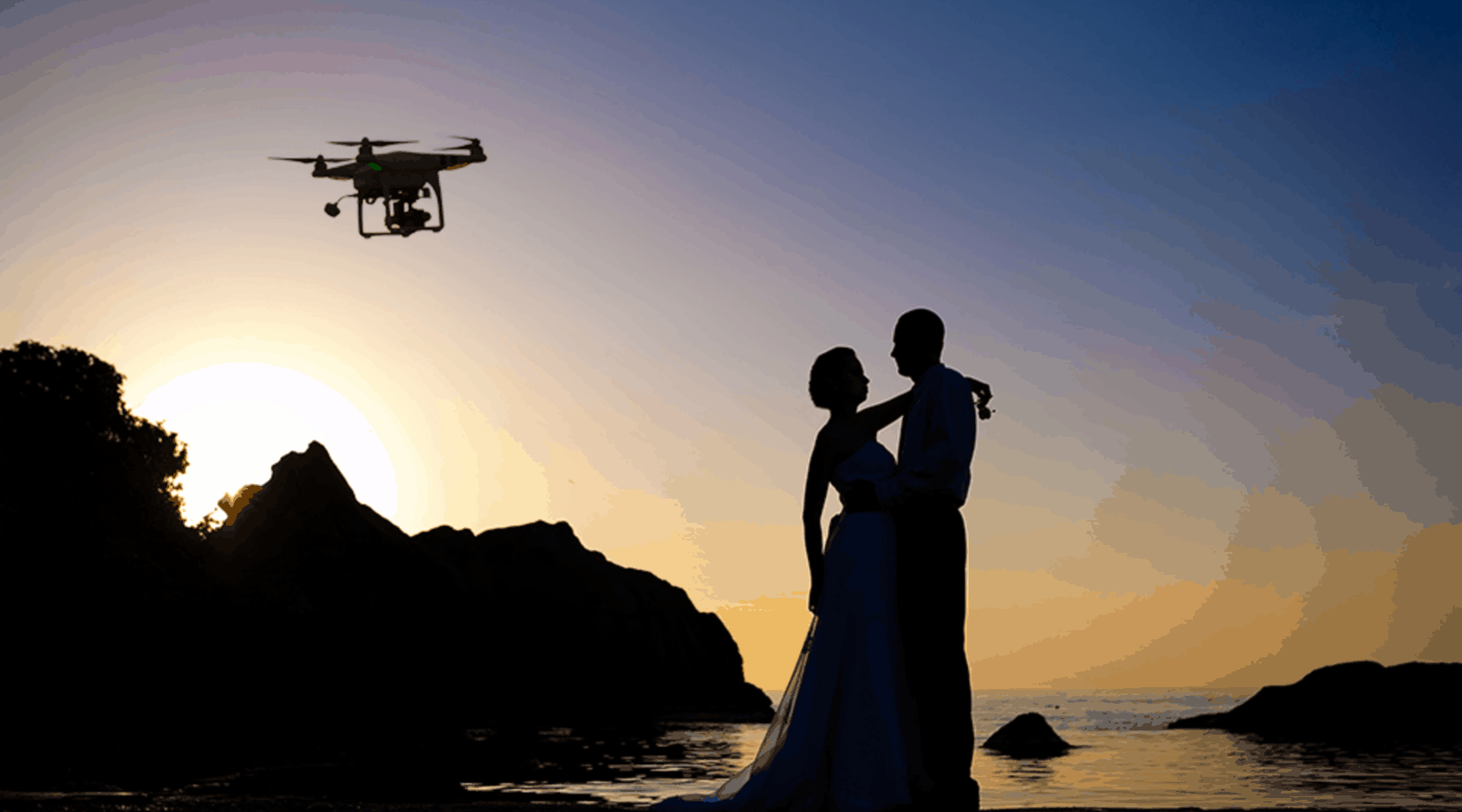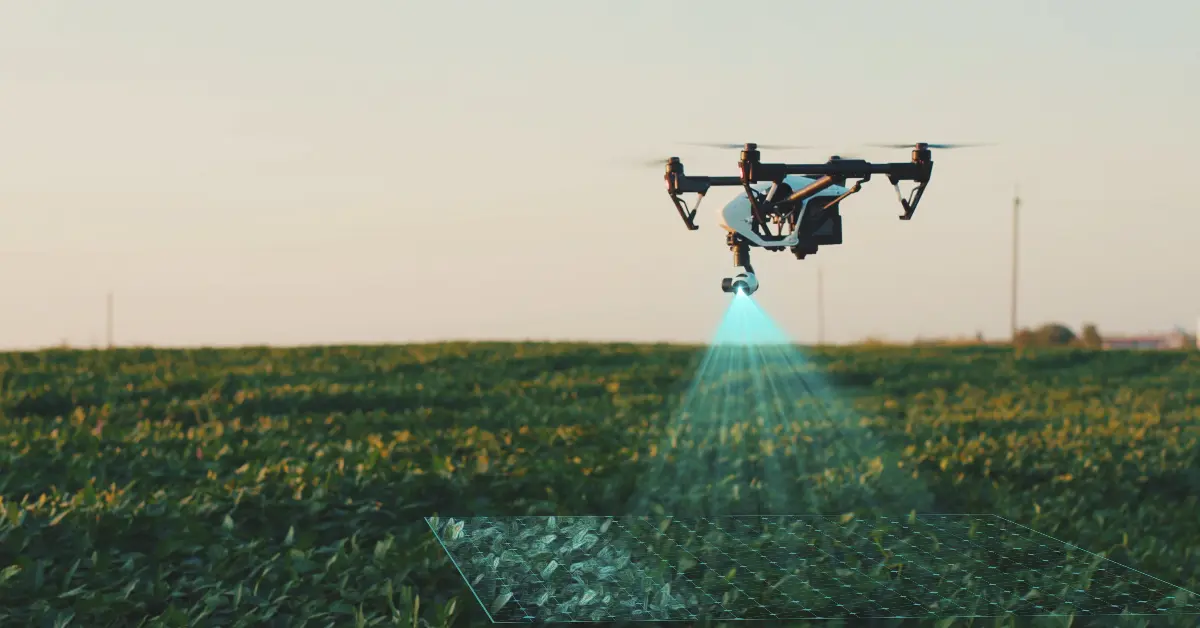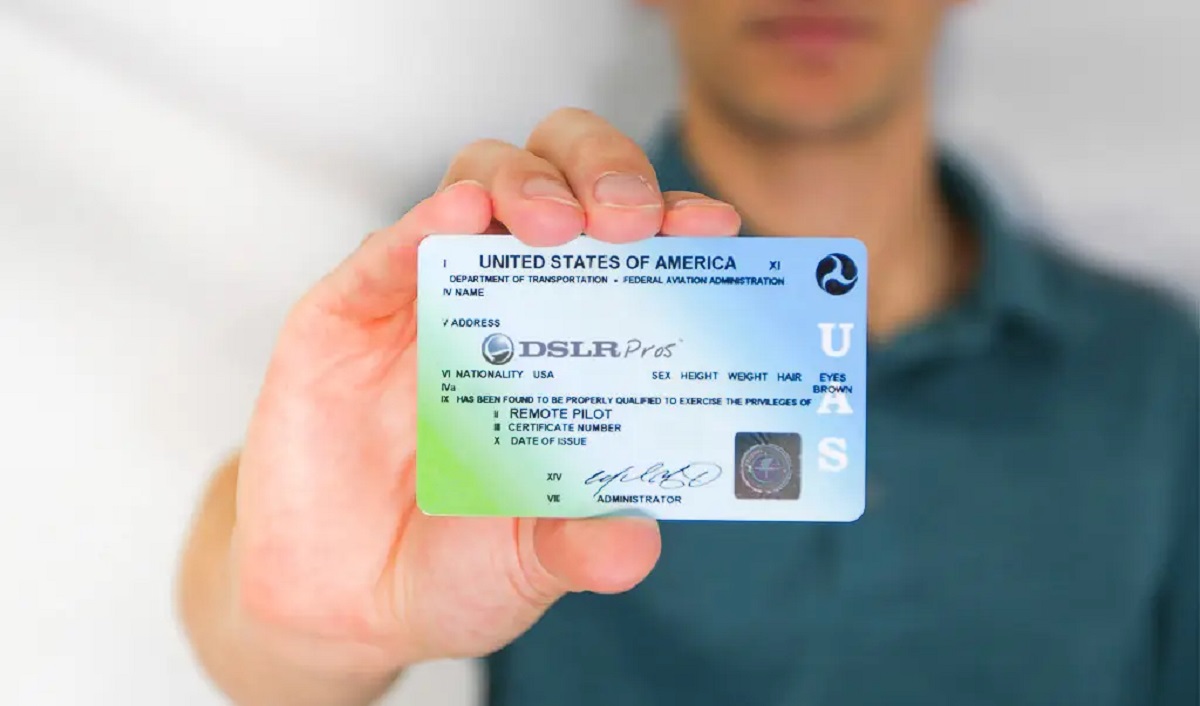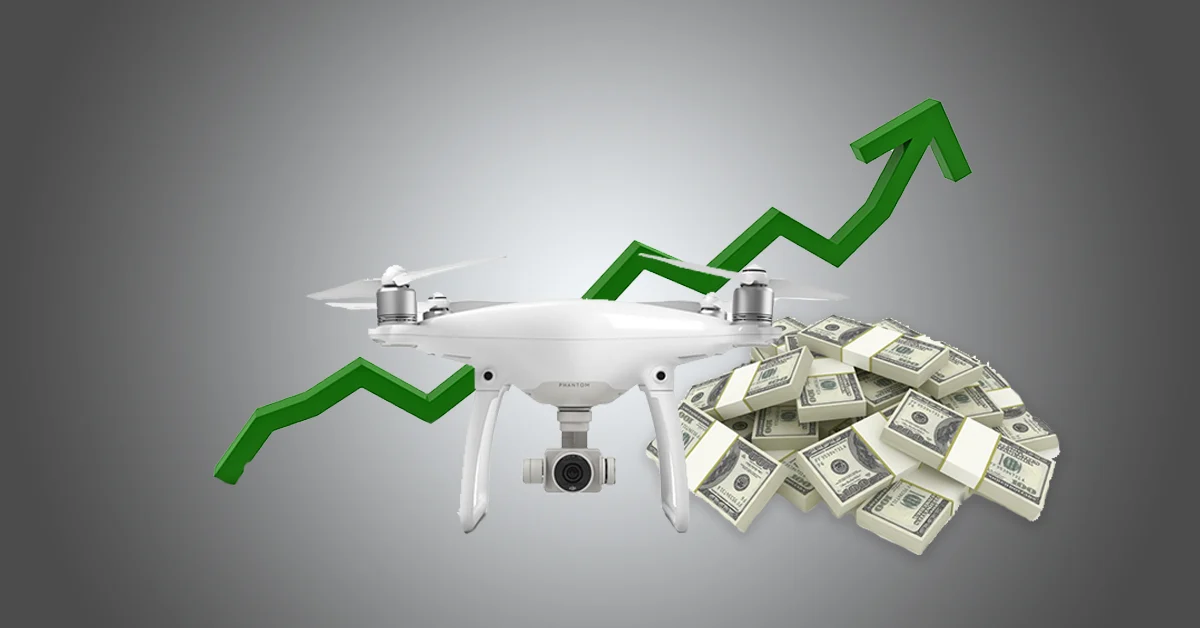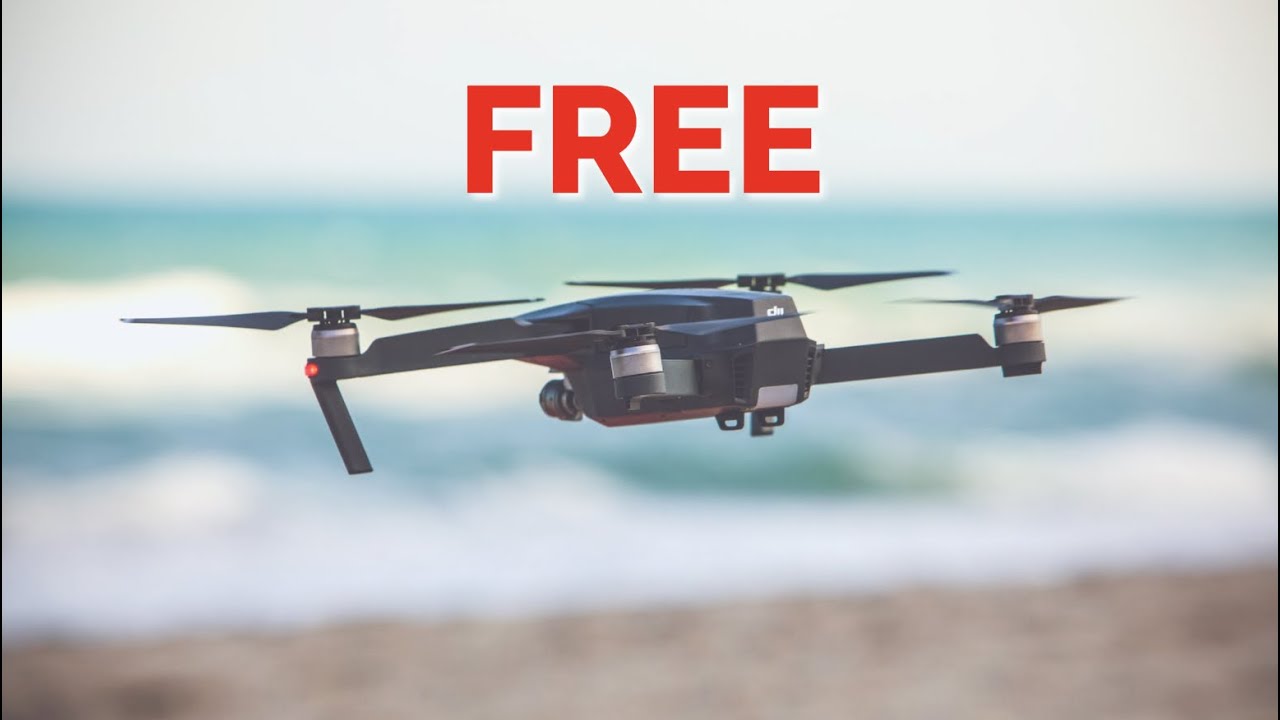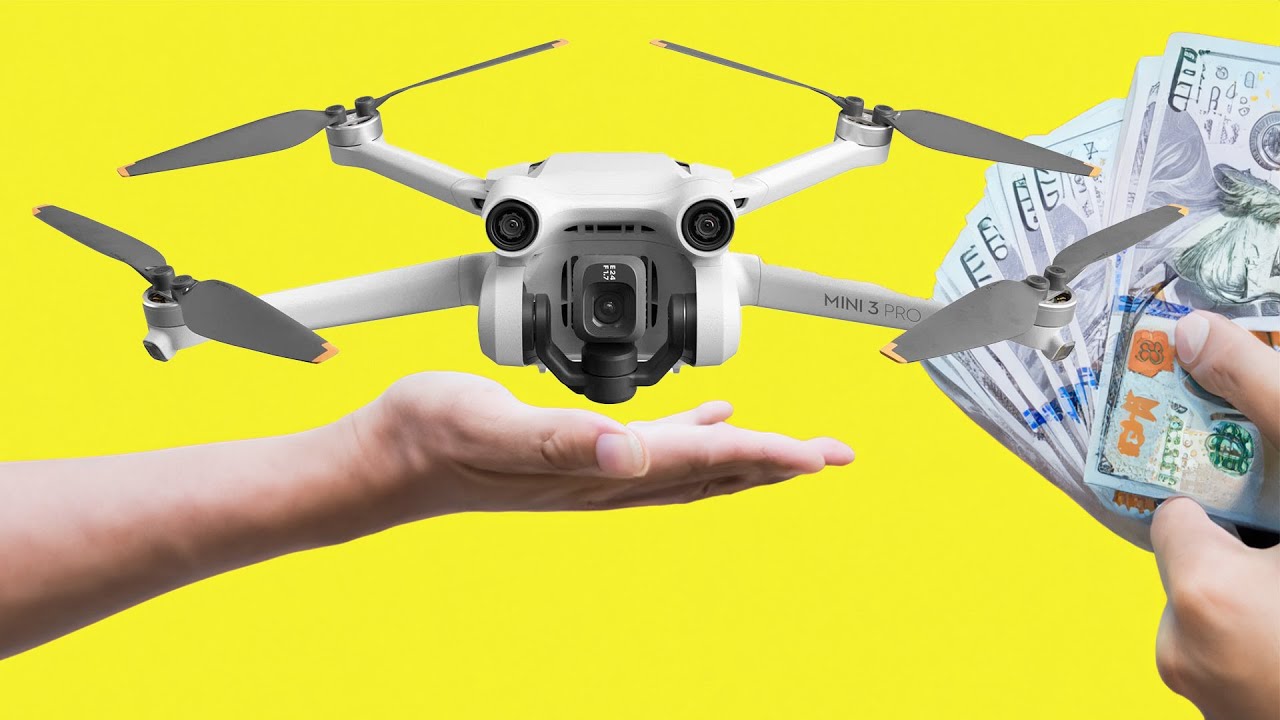Introduction
Welcome to the world of drone photography! With the advent of modern technology, drones have revolutionized the way we capture images and videos from the sky. The demand for aerial photography has soared, creating a lucrative opportunity for entrepreneurs looking to start their own drone photography business.
Drone photography offers a unique perspective that was once only accessible to professional photographers with expensive equipment. Now, anyone with a passion for photography and a drone can take stunning aerial shots. Whether it’s capturing breathtaking landscapes, real estate properties, or special events, drone photography adds a whole new level of creativity and storytelling to any project.
In this article, we will guide you through the process of starting your own drone photography business. From choosing the right equipment to building client relationships, we will cover all the essential steps to help you turn your passion into a profitable venture.
Before diving into the details, it’s important to note that starting a drone photography business requires commitment, dedication, and a willingness to continuously improve your skills. It’s not just about operating a drone and clicking the shutter button; it’s about capturing unique perspectives, composing compelling shots, and delivering high-quality content that exceeds client expectations.
Whether you’re a seasoned photographer looking to expand your services or a newbie eager to enter the world of photography, this guide will provide you with invaluable insights and practical tips to help you succeed. So, let’s get started on this exciting journey!
Choosing the Right Equipment
When starting a drone photography business, selecting the right equipment is crucial. The quality of your drone, camera, and other accessories will directly impact the quality of your aerial photos and videos. Here are some factors to consider when choosing your equipment:
1. Drone: Look for a drone that offers stable flight capabilities, good battery life, and a high-quality camera. Popular options include DJI Phantom, DJI Mavic, and Autel Evo. Consider the drone’s range, flight time, and maximum speed, as these factors will determine your ability to capture shots from varying distances and angles.
2. Camera: Ensure that the drone comes equipped with a high-resolution camera capable of capturing sharp and detailed images. Look for models that shoot in RAW format for maximum editing flexibility. The camera’s sensor size, aperture, ISO range, and image stabilization are important considerations for achieving professional-quality results.
3. Accessories: Invest in additional batteries, memory cards, and propellers to ensure uninterrupted shooting sessions. Filters such as ND filters can help control exposure and create more balanced images. A sturdy carrying case will protect your equipment during transportation.
4. Remote Controller: Check for a remote controller with a comfortable grip and responsive controls. Some models offer advanced features like live video transmission, GPS capabilities, and obstacle avoidance sensors, which can enhance your shooting experience and improve flight safety.
5. Software and Apps: Research the available flight planning and image editing software that are compatible with your drone model. These tools can assist in pre-flight planning, autonomous flights, and post-processing to enhance your images and videos.
Before making your final purchase, read reviews, watch tutorial videos, and compare prices to make an informed decision. Consider your budget, intended use, and long-term goals when selecting your equipment. Remember, investing in high-quality gear upfront will save you time and money in the long run and set the foundation for delivering exceptional results to your clients.
Acquiring the Necessary Skills
While having the right equipment is essential, developing the necessary skills is equally important for success in drone photography. Here are some key skills to focus on:
1. Drone Flight Skills: Familiarize yourself with the controls of your drone and practice flying in different environments. Mastering maneuvers like takeoff, landing, hovering, and smoothly controlling the drone’s movement will help you capture stable and precise shots.
2. Aerial Composition: Learn the principles of composition and apply them to aerial photography. Consider factors such as framing, leading lines, perspective, and the rule of thirds. Experiment with different angles and viewpoints to create visually appealing and balanced compositions.
3. Photography Basics: Understand the fundamental principles of photography, including exposure, shutter speed, aperture, and ISO. Learn how these settings affect your images and how to adjust them accordingly to achieve the desired results. Take the time to study lighting techniques and how they differ in aerial photography.
4. Image Editing: Develop your post-processing skills to enhance your drone photos. Learn how to adjust exposure, color balance, and sharpness to bring out the best in your images. Familiarize yourself with software like Adobe Lightroom or Photoshop, which offer powerful editing tools specifically tailored for photography.
5. Legal Knowledge: Stay updated on the legal requirements and regulations regarding drone operation in your region. Familiarize yourself with airspace restrictions, permit requirements, and privacy considerations. This knowledge will not only keep you in compliance with the law but also help you educate and reassure your clients about the legality and professionalism of your services.
6. Ongoing Education: Keep learning and improving your skills through online tutorials, workshops, and networking with other drone photographers. Stay updated with the latest trends and techniques in drone photography to continually push the boundaries of your creativity and deliver exceptional work.
Remember, acquiring and refining these skills will take time and practice. Be patient, stay dedicated, and don’t be afraid to experiment and explore new techniques. As you continuously develop your skills, you’ll gain confidence, produce better results, and establish yourself as a capable and reliable drone photographer.
Understanding the Legal Requirements
Operating a drone photography business requires a thorough understanding of the legal requirements and regulations governing drone usage in your area. Compliance with these laws will not only keep you on the right side of the law but also help you build trust and credibility with clients. Here are some key aspects to consider:
1. Drone Registration: Check if your country or jurisdiction requires you to register your drone. In many places, drones above a certain weight limit must be registered with the appropriate authorities.
2. Pilot Certification: Some countries mandate that commercial drone pilots hold a certification or license. Check the requirements and procedures for obtaining the necessary certifications in your area.
3. Airspace Regulations: Understand the airspace restrictions and no-fly zones in your region. It is crucial to know where you can and cannot operate your drone to avoid any legal or safety issues. Familiarize yourself with local airports, restricted areas, and any other designated no-fly zones.
4. Privacy Considerations: Respect the privacy of individuals when conducting aerial photography. Understand the laws regarding capturing images of private properties or individuals without their consent, and ensure you comply with relevant privacy laws.
5. Commercial Permits and Insurance: Some areas may require you to obtain specific permits or licenses to operate your drone commercially. Additionally, consider obtaining liability insurance to protect yourself and your business from any potential damages or accidents.
6. Client Contracts and Usage Rights: Clearly establish the terms and conditions of working with clients through contracts. Specify the ownership and usage rights of the images and videos you capture to avoid any legal disputes in the future.
It is imperative to stay updated with any changes or updates in the drone regulations in your area. Follow local aviation authorities or regulatory bodies for the latest information and guidelines. Being well-informed about the legal requirements will help you operate your drone photography business legally and professionally, ensuring a smooth and successful operation.
Setting Up Your Business
Starting a drone photography business involves more than just capturing stunning aerial shots. It requires careful planning and setting up the foundation of your business. Here are some key steps to help you get started:
1. Business Structure: Determine the legal structure of your business, such as a sole proprietorship, partnership, or LLC. Consult with a legal professional or business advisor to choose the most suitable structure that aligns with your goals and provides legal protection.
2. Business Name and Branding: Choose a memorable and unique name for your business. Create a logo and develop a brand identity that reflects your style and professionalism. Consistency in branding across your website, social media profiles, and marketing materials will help establish brand recognition.
3. Business License and Permits: Check with your local authorities about obtaining any necessary business licenses or permits. This may include a general business license or specific permits for conducting aerial photography services in your area.
4. Insurance: Protect your business and assets by obtaining appropriate insurance coverage, including liability insurance and equipment insurance. This will provide peace of mind and financial protection in case of accidents or damages.
5. Accounting and Financial System: Set up an accounting system to track your business income and expenses. Consider using accounting software or hiring an accountant to ensure accurate record-keeping, financial management, and tax compliance.
6. Website and Online Presence: Create a professional website to showcase your portfolio, services, contact information, and any client testimonials. Optimize your website with relevant keywords and ensure it is mobile-friendly. Establish a presence on social media platforms to reach a wider audience and engage with potential clients.
7. Pricing Structure: Determine your pricing strategy based on factors such as the complexity of the project, the time involved, and the value you provide. Research the market rates in your area to ensure your pricing is competitive yet profitable.
8. Contracts and Terms of Service: Develop clear and comprehensive contracts outlining the terms and conditions of your services. Include details regarding pricing, deliverables, usage rights, and any other relevant terms to protect both parties involved.
9. Professional Network: Build relationships with other professionals in related industries, such as real estate agents, event planners, or videographers. Collaborating and networking with others can lead to referrals and collaborations that expand your business reach.
By carefully setting up your business, you’ll establish a strong foundation that will support your growth and success as a drone photography entrepreneur. Take the time to plan and execute each step with attention to detail, ensuring that your business is well-positioned in the market and ready to serve clients effectively.
Developing a Portfolio
Building a strong portfolio is crucial for showcasing your skills and attracting potential clients to your drone photography business. A well-curated portfolio demonstrates your expertise, creativity, and versatility as a drone photographer. Here are some tips to help you develop an impressive portfolio:
1. Variety and Diverse Subjects: Include a wide range of aerial photographs showcasing your ability to capture different subjects and environments. This can include landscapes, architecture, real estate, events, and more. Diversifying your portfolio will showcase your versatility and appeal to a broader client base.
2. Quality over Quantity: Focus on showcasing your best work rather than overwhelming viewers with too many mediocre images. Select images that highlight your technical skills, aesthetic eye, and ability to capture captivating compositions.
3. Consistency in Style: Develop a consistent style and aesthetic in your portfolio to create a cohesive and recognizable brand. This could be achieved through consistent editing techniques, color palettes, or shooting preferences. Clients often seek photographers who have a distinct style that matches their vision.
4. Show Progression: Include samples from various stages of your photography journey to demonstrate growth and improvement over time. This can inspire confidence in potential clients and highlight your dedication to continually honing your skills.
5. Consider Context: Provide context and background information for each image in your portfolio, such as the purpose, location, or client. This helps potential clients understand the scope and versatility of your work and how it can relate to their own projects.
6. Presentation: Present your portfolio in a clean and professional manner. Use a well-designed and easy-to-navigate website or a digital portfolio platform to showcase your work. Ensure that the images are showcased in high quality and accurately represent the original captured image.
7. Update Regularly: Continuously update your portfolio with your latest and best work. As you grow as a photographer, replace older images with newer, more impressive ones that reflect your current skill level and style.
8. Seek Feedback: Share your portfolio with fellow photographers or mentors and seek constructive feedback. This can provide valuable insights on areas for improvement and help you refine your portfolio to its optimal state.
Remember, building a portfolio takes time and effort. It’s an ongoing process that evolves as you grow as a photographer. Invest time in curating and updating your portfolio to ensure it reflects your skills, expertise, and unique perspective as a drone photographer.
Marketing and Promoting Your Services
Effective marketing and promotion are key to building a successful drone photography business. By implementing strategic marketing efforts, you can increase brand awareness, attract new clients, and differentiate yourself from competitors. Here are some effective strategies to market and promote your drone photography services:
1. Create a Strong Online Presence: Establish a professional website that showcases your portfolio, services, and contact information. Optimize your website for search engines using relevant keywords to improve your online visibility. Utilize social media platforms to engage with your target audience, share your work, and build a community of followers.
2. Leverage Social Media: Use platforms like Instagram, Facebook, and Twitter to share your aerial photographs, behind-the-scenes footage, and client testimonials. Engage with your audience by responding to comments and questions, and consider running paid advertising campaigns to reach a larger audience.
3. Collaborate with Local Businesses: Partner with local businesses that could benefit from your drone photography services. This could include real estate agents, event planners, resorts, or travel agencies. Offer to capture stunning aerial shots for their marketing materials or collaborate on a joint promotional campaign.
4. Participate in Industry Events and Trade Shows: Attend industry-related events, conferences, and trade shows to network with potential clients and professionals in the field. Display your work and distribute business cards or brochures to create brand awareness and generate leads.
5. Offer Special Promotions and Packages: Create special promotions, discounts, or package deals to attract new clients and encourage repeat business. Consider offering limited-time promotions for specific events or holiday seasons to drive interest and increase bookings.
6. Develop Partnerships with Influencers or Bloggers: Collaborate with influencers or bloggers in your niche who have a significant online following. Offer them complimentary drone photo sessions in exchange for exposure on their platforms. Their endorsement can significantly boost your visibility and attract new clients.
7. Utilize Testimonials and Referrals: Encourage satisfied clients to provide testimonials that highlight their positive experience working with your drone photography business. Display these testimonials on your website and share them on social media to build trust and credibility. Additionally, ask happy clients to refer you to their connections, offering incentives as a token of appreciation.
8. Professional Networking: Attend local business networking events or join professional associations to meet potential clients and establish valuable connections. Networking allows you to build relationships with individuals who may refer clients to you or collaborate on projects.
9. Showcase Your Expertise: Demonstrate your expertise and share your knowledge by creating valuable content through blog posts, tutorials, or educational videos. Position yourself as a thought leader in the drone photography industry to gain credibility and attract clients who value your expertise.
Remember, effective marketing requires consistency and persistence. Evaluate the results of your marketing efforts, and adjust your strategies accordingly. With a well-executed marketing plan, you can effectively reach your target audience, generate leads, and grow your drone photography business.
Pricing Your Services
Determining the right pricing for your drone photography services is essential for the success and profitability of your business. While it can be challenging to find the perfect balance, considering various factors will help you set competitive and fair prices. Here are some key considerations when pricing your services:
1. Cost Analysis: Calculate your expenses, including drone maintenance, equipment upgrades, insurance, marketing costs, and any other business-related expenses. Factor in the time spent on each project, including pre and post-production work, to determine your cost base.
2. Market Research: Research the market rates for drone photography services in your area. Compare prices charged by other photographers with similar skill levels and services. Setting your prices too high may deter potential clients, while setting them too low might compromise your profitability.
3. Complexity of Projects: Consider the complexity and scope of each project when determining your prices. Projects that require special permissions, extensive editing, or specific expertise should be priced higher than simpler assignments.
4. Time and Effort: Evaluate the time and effort required for each project. This includes not only the time spent capturing the shots but also post-production work, such as editing and delivering the final images or videos. Factor in the cost of your time and expertise.
5. Value Provided: Assess the value you provide to clients. This includes your unique skills and expertise in aerial photography, the quality of your final product, and the level of customer service you offer. Clients are often willing to pay a premium for exceptional quality and a positive experience.
6. Packaging and Add-Ons: Consider offering different pricing packages that cater to varying client needs and budgets. This could include options for different levels of editing, additional equipment or personnel, or expedited delivery. Offering add-ons or extras allows clients to customize their experience and potentially increase your overall revenue.
7. Client Budget: While it’s important to consider your own costs and value, it’s also essential to be mindful of your potential clients’ budgets. Adjust your pricing accordingly to strike a balance between profitability and providing competitive rates for your target market.
8. Re-Evaluate Periodically: Regularly review and reassess your pricing strategy. Take into account changes in operating costs, market demand, and the value you provide. Adjust your prices as necessary to stay competitive and maintain profitability.
9. Communicate Clearly: Clearly state your pricing structure on your website or in your contract to avoid any misunderstandings. Be transparent about what is included in your pricing and any potential additional charges or fees.
Remember, finding the ideal pricing strategy may require some trial and error. Continuously evaluating and adjusting your prices will help you find the right balance that aligns with your business goals, attracts clients, and ensures sustainable profitability.
Building Client Relationships
Building strong and lasting client relationships is a crucial aspect of running a successful drone photography business. Happy and satisfied clients not only become repeat customers but also refer your services to others. Here are some key tips for building and nurturing client relationships:
1. Effective Communication: Communicate clearly and promptly with your clients from the initial inquiry to the final delivery. Keep them informed about the progress of their project and promptly address any questions or concerns they may have. Good communication builds trust and shows your professionalism.
2. Understand Client Needs: Take the time to truly understand your clients’ needs, vision, and expectations. Ask them questions and actively listen to their responses. Tailor your approach to their specific project requirements to deliver results that exceed their expectations.
3. Provide Exceptional Customer Service: Go above and beyond to provide exceptional customer service. Be responsive, friendly, and professional in all interactions. Make your clients feel valued and appreciated by offering personalized experiences and addressing their individual needs.
4. Deliver High-Quality Work: Consistently deliver high-quality work that showcases your skills and meets or exceeds client expectations. Pay attention to details, maintain consistency in your work, and strive to continuously improve your craft.
5. Manage Expectations: Be transparent and manage client expectations from the outset. Clearly communicate the scope of work, timelines, and deliverables. If there are any limitations or constraints, communicate them upfront to avoid misunderstandings later on.
6. Seek Feedback: Regularly seek feedback from your clients to gauge their satisfaction and identify areas for improvement. Actively listen to their input and take steps to address any concerns or suggestions. Feedback helps you refine your services and demonstrates your commitment to continuous improvement.
7. Build Long-Term Relationships: Look beyond individual projects and aim to build long-term relationships with your clients. Stay in touch, send personalized greetings on special occasions, or provide exclusive discounts for repeat clients. Fostering long-term relationships leads to recurring business and client loyalty.
8. Showcase Client Work: With your clients’ permission, showcase your work for them in your portfolio or on your website. This not only highlights your capabilities but also serves as a testimonial to the quality of your services.
9. Ask for Referrals: Satisfied clients are often willing to refer your services to their network. Don’t hesitate to ask for referrals. Word-of-mouth recommendations can be a powerful marketing tool for your business.
Remember, building client relationships is an ongoing process that requires dedication and consistent effort. By focusing on delivering outstanding customer service, providing high-quality work, and building rapport with your clients, you can foster long-lasting connections that contribute to the growth and success of your drone photography business.
Managing Your Business Finances
Properly managing your business finances is essential for the success and sustainability of your drone photography business. By effectively tracking and planning your finances, you can make informed decisions, maintain profitability, and ensure financial stability. Here are some key steps to manage your business finances:
1. Separate Business and Personal Finances: Establish separate bank accounts and credit cards for your business to maintain clear separation between your personal and business finances. This simplifies bookkeeping, ensures accurate financial records, and helps you track business expenses and revenues more efficiently.
2. Set Up an Accounting System: Choose an accounting system that suits your needs, such as accounting software or hiring an accountant. This will help you track income, expenses, and cash flow, allowing you to have a clear overview of your financial health.
3. Track Income and Expenses: Regularly monitor and record all income and expenses related to your drone photography business. This includes equipment purchases, marketing expenses, insurance premiums, and any other business-related costs. Staying organized and up-to-date with your financial records will enable better financial decision-making.
4. Invoice Promptly and Follow Up: Send out invoices promptly after completing a project. Clearly outline the services provided, payment terms, and due dates. Follow up with clients for any overdue payments politely but firmly to ensure timely payment.
5. Budgeting and Financial Planning: Develop a budget to forecast your income and expenses. Plan for upcoming expenses and set aside funds for reinvesting in your equipment, marketing activities, or professional development. Regularly review and adjust your budget to accommodate changes in your business needs.
6. Cash Flow Management: Monitor your cash flow closely to ensure you have enough funds to cover your operating expenses, investments, and unexpected costs. Implement strategies to improve cash flow, such as offering discounts for early payments or setting up installment plans for your clients.
7. Tax Compliance: Understand and comply with tax regulations specific to your jurisdiction. Keep accurate records of your income and expenses, and consult with a tax professional to maximize allowable deductions and ensure timely filing of tax returns.
8. Seek Professional Advice: Consider working with an accountant or financial advisor who specializes in small businesses. They can provide guidance on financial strategies, tax planning, and help you navigate complex financial matters.
9. Regular Financial Analysis: Analyze your financial statements regularly to assess the overall financial health of your business. Review your profit and loss statement, balance sheet, and cash flow statement to identify trends, areas for improvement, and make informed business decisions.
Managing your business finances requires discipline, organization, and attention to detail. By implementing these strategies, you can ensure the financial stability and long-term success of your drone photography business.
Expanding Your Business
Once your drone photography business has gained momentum and established a solid foundation, you may consider expanding your operations to reach new markets and increase your revenue. Here are some strategies to help you expand and grow your drone photography business:
1. Offer Additional Services: Consider diversifying your services by offering additional photography or videography services. This could include ground-level photography, time-lapse videos, or even 360-degree virtual tours. Expanding your services can attract a wider range of clients and increase your earning potential.
2. Explore New Markets: Identify new markets or industries where your drone photography services can be in demand. Research and target sectors such as real estate, construction, agriculture, tourism, or events that may benefit from aerial photography. Tailor your marketing efforts to reach these specific industries and establish your presence in those markets.
3. Collaborate with Other Professionals: Forge partnerships or collaborations with other professionals in related industries. For example, team up with videographers, event planners, or wedding photographers to offer comprehensive packages that include both aerial and ground-level photography services. These collaborations can help you tap into new client networks and expand your reach.
4. Geographic Expansion: If you have established a strong presence in your local market, consider expanding your operations to neighboring areas or even different cities. This allows you to reach a larger customer base and explore new opportunities for growth.
5. Target Corporate Clients: Market your services to corporate clients who may require drone photography for advertising, marketing campaigns, or project documentation. Reach out to businesses, advertising agencies, or marketing departments to showcase how your services can add value to their operations.
6. Invest in Advanced Equipment and Technology: Stay updated with the latest advancements in drone technology and invest in advanced equipment that can expand your capabilities. This may include drones with higher camera resolutions, longer flight times, or specialized features like thermal imaging. Offering innovative and unique services can give you a competitive edge and attract clients seeking cutting-edge aerial solutions.
7. Train and Expand Your Team: As your business grows, you may need to hire additional team members to handle the increased workload and expand your service offerings. Train your team to ensure consistency in quality and customer service. Having a dedicated team allows you to take on larger projects and serve multiple clients simultaneously.
8. Build an Online Presence: Continue to enhance your online presence through consistent branding and active engagement on social media platforms. Regularly update your website and portfolio with your latest work to showcase your growth and expertise. Actively participate in online communities and photography forums to network with industry professionals and generate leads.
9. Customer Referrals and Testimonials: Leverage existing customer relationships by asking for referrals and testimonials. Satisfied clients can become your brand advocates and help attract new clients to expand your business. Offer incentives or referral programs that encourage clients to refer their connections to your services.
Expanding your drone photography business requires careful planning, strategic partnerships, and continuous innovation. By implementing these strategies, you can position your business for growth and take advantage of new opportunities in the ever-evolving drone photography industry.
Conclusion
Starting a drone photography business offers a thrilling and rewarding journey filled with opportunities for creativity and entrepreneurship. While the process may seem daunting, breaking it down into manageable steps allows for a smoother transition into the industry.
From choosing the right equipment to understanding the legal requirements and managing your business finances, each aspect of starting and running a drone photography business plays a crucial role in your success. Acquiring the necessary skills, developing a portfolio, and effectively marketing your services are key to attracting clients and building lasting relationships.
As you navigate the world of drone photography, always strive for excellence in your work and dedication to customer satisfaction. Continuously refining your skills, keeping up with industry trends, and staying informed about legal requirements will position you as a professional in the field.
Remember, success in the drone photography business is not measured solely by revenue. It is also about creating meaningful connections with clients, capturing stunning images, and delivering exceptional service. Embrace challenges as learning opportunities, adapt to changes in the industry, and always seek ways to innovate and expand your offerings.
Starting a drone photography business requires patience, persistence, and a passion for capturing captivating aerial shots. With the right equipment, skills, and business strategies in place, you can turn your love for photography and drones into a thriving and fulfilling entrepreneurial venture.







